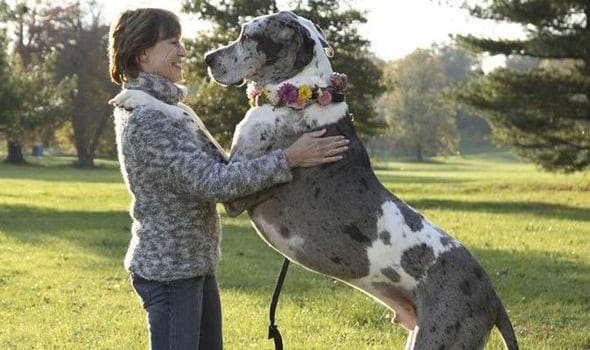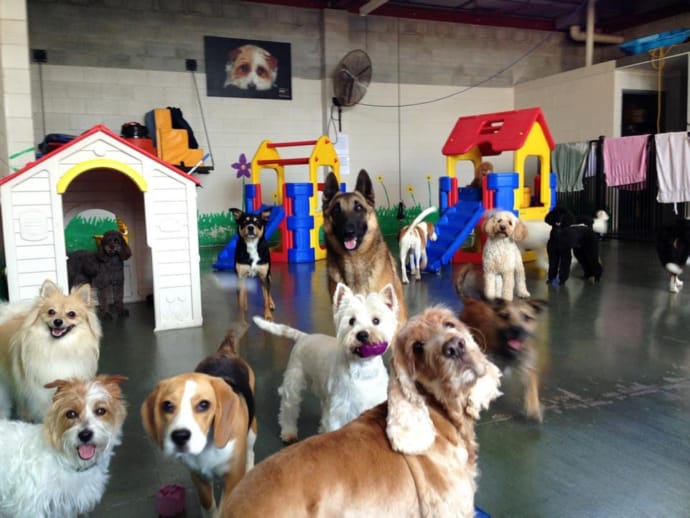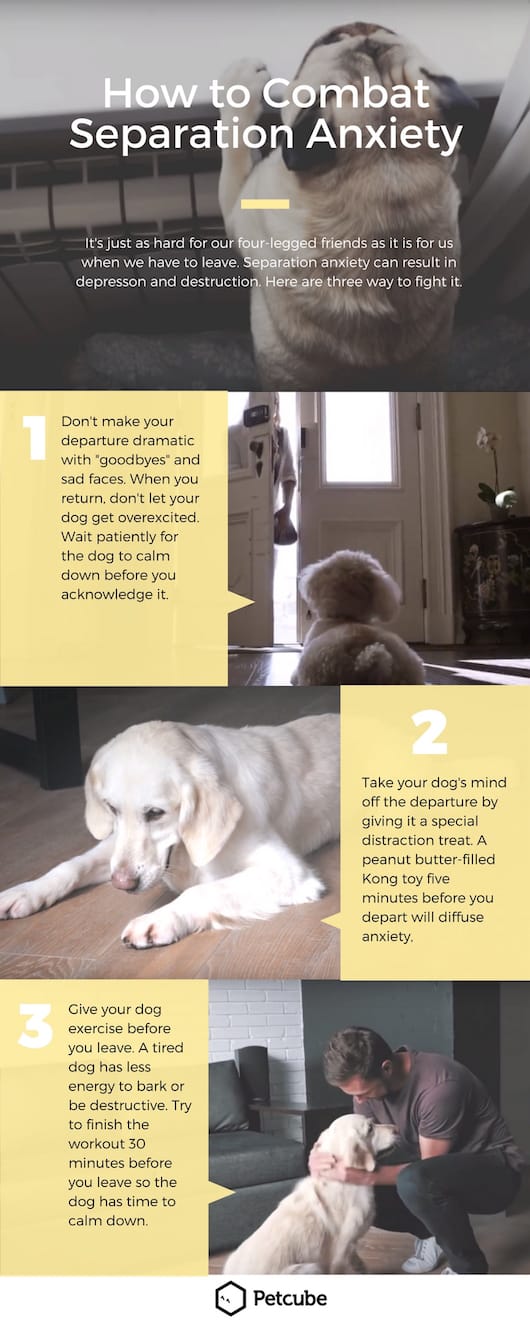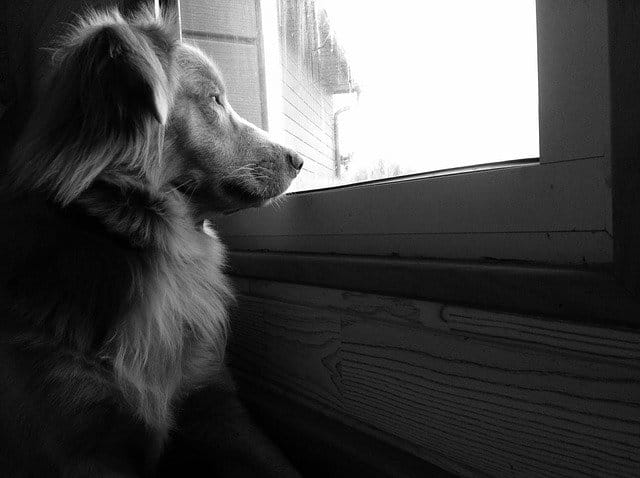Does your dog chew on your shoes when you’re away, destroy furniture or defecate? Don’t get angry too soon, because this could be a sign that your dog is suffering from separation anxiety.
Petcube pet camera is a quick way to reach out to your worried dog from a remote location.
Separation anxiety in dogs has been found to be the primary reason behind many frantic and destructive behaviors that pet parents often mistake for other behavioral problems. Treatment for separation anxiety is essential because it will make your dog calm and happy.
Stop Googling - Ask a Real Vet
This guide will teach you how to ease and treat anxiety in dogs and make you and your pup’s lives better!
What is Separation Anxiety in Dogs?
Separation anxiety in dogs is frantic, distressed and often destructive behaviors associated with separation from their pet parents. It can still qualify even if these actions only last for a few minutes. Pet parents often mistake separation anxiety for disobedience or spite, but dogs are actually distressed and upset because of their parent’s absence.
Signs of Separation Anxiety
Signs of separation anxiety in dogs include salivating, barking, howling, dilated pupils, panting, trembling and pacing. Behavioral signs include ignoring food, coprophagia, destroying items in the home, scratching at furniture, attempting to escape from a crate or room, and exuberantly greeting their owner as if they haven’t seen them in years.
Because dogs with separation anxiety are more prone to accidents and destructive behavior, pet emergencies may occur. And as a pet owner, you want to be able to focus on your pet’s treatment rather than worry about how you can pay the vet bills (which are even higher during emergencies). Petcube’s Pet Emergency Fund makes this possible with its friendly terms and features that are thoughtfully designed for both pets and pet owners.
So how does the Pet Emergency Fund work? It starts by talking to an online vet to confirm your pet emergency case. Next is to a veterinary clinic or hospital nearby to get the help your pet needs. After treatment, you will then ask the clinic’s receptionist to call the emergency fund’s hotline to pay for the final vet visit cost. After this, you can focus on your pet’s recovery as the vet bills have been paid.
Good news! Our blog readers get an exclusive 27% off if you follow this link.
Read more: Signs & Symptoms of Separation Anxiety in Dogs
How to Stop Separation Anxiety in Dogs?
As a pet parent, your goal is to find the best calming anxiety treatments for your pet. Treating separation anxiety in dogs does not require a medical professional, and you can succeed on your own with persistent work and dedication. Dog anxiety treatment includes behavioral changes that will help your pup learn that being alone is not scary. Here is a list of 10 dog calming treatments:
1. Change Your “Going Away” Signals
Use a different door, put your coat on but don’t leave for 15 minutes, leave your keys/purse/shoes in a different location. The goal is to break your dog’s association of these actions with your departure and not let them trigger separation anxiety. When you leave, give your dog a treat or a toy to play with to distract them. Calming treats for dogs can be used as a short-term remedy for separation anxiety. They will also teach your pooch that being alone is not scary and create positive associations with your departure.
2. Downplay Goodbyes and Hellos
Don’t get emotional when leaving your dog and overexcited when you come back. By paying too much attention to your departure and return, you risk reinforcing the dog’s fear of your absence. Calmly say goodbye and leave. When you come back, quietly say hello and don't get too affectionate until your dog has calmed down.

3. Exercise Your Dog Before Departure
A tired dog is a calm dog. Exercising at least 30 minutes before departure will relax your dog and divert its attention to food and sleep.
Below is a useful video guide for the best workouts you and your dog can do together:
If you don’t have time to go outside, watch this video for tips on how to exercise your dog inside the house:
4. Train Your Dog to Be Alone When You Are in the House
Try leaving your dog alone in a room while you go to another part of the house. If your dog has severe separation anxiety, you can start with small 5-10 second intervals and gradually increase them to 20-30 minutes over a few weeks. Do everything step by step and monitor your pet's condition.
5. Create Personal Space for Your Dog
If you've ever trained your dog to sleep next to you, it's time for a change and a separation process. Get them a separate dog bed. Don't worry, you don't have to completely remove yourself from your kid.
You can still pet them and give them soothing treats when they are in the dog bed. Over time, your pooch will learn to enjoy their own space and be independent of you. This will help reduce their anxiety when you are not around.
6. Leave Comfort Items and Background Music on for Your Dog
Items that have your scent such as dirty laundry can help your dog relax and remember that you will come back. Remove stress factors such as chokers, collars, chains, or crates if your dog doesn’t like them. Hide treats around the house so they can hunt them while you're away. Finally, soothing nature sounds can help your dog relax and fall asleep. You can monitor your dog through a Petcube Bites 2, a pet camera that doubles as a treat dispenser.
Things with a positive association for your dog can make their time alone more enjoyable. For example, things that have your scent, can help your dog relax and remember that you will be back. It's also best to think ahead and remove stressors such as nooses, collars, chains or crates, and anything else your dog doesn't like.
You can arrange a little challenge for your furry friend and hide treats around the house. Then your dog can hunt for them while you are away. Finally, the soothing sounds of nature can help your dog relax and fall asleep. Does your pet love the sound of rain? Great, turn it on. Meanwhile, you can watch your dog with Petcube Bites 2, a pet camera that doubles as a treat dispenser.
7. Don’t Leave Your Dog Alone for Too Long!
Your dog can learn to be alone for part of the day, but if you need to be away for longer than 6-8 hours, bring them to work if possible. You can also structure your errands so that you are only away for short periods of time. If you need to leave for several days, ask a friend or a relative or consider a doggy daycare service or hotel to make sure they're taken care of when you're away.

8. Medicine
To treat severe separation anxiety in dogs, consider calming medicine. Contact your veterinarian to discuss your options.
9. Shop for Anxiety Treatment Pet Supplies
Get a KONG toy which will entertain your pup by engaging them to work for a treat. A dog swaddling jacket can also help ease your pup’s anxiety by applying constant gentle pressure to their body. Another helpful dog-interactive toy is the Petcube Bites 2, which allows you to fling treats to your dog. Check out other anxiety treatment pet supplies.
10. Get a Petcube!
Petcube Play 2 and Petcube Bites 2 are designed to improve the lives of pets and pet parents. You can talk to your pet through the Petcube App and give treats using Petcube Bites 2 treat cam or play with a laser through interactive pet camera Petcube Play 2. Regularly interacting with your dog will calm separation anxiety and teach them that being alone is not scary. Your dog will know that you haven't forgotten about them.
Remember that there is no magic guide on how to cure separation anxiety in dogs immediately. A long-lasting and effective cure requires dedication and commitment but can be easily achieved with the help of supplementary products like Petcube Play 2 or Petcube Bites 2 and planning.
We've put together an infographic with three easy tips dog owners can use right now to prevent separation anxiety and keep dogs calm.

Was this article helpful?
Help us make our articles even better









